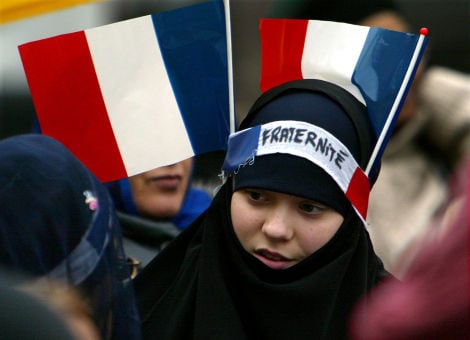
Europe: Minorities are protected, but by whom?
Alexandra Veloy, MRG’s Fundraising Intern, muses on the shifting patterns of minority rights protection in Europe.
On 3rd September, an event entitled ‘Citizenship, Minority Rights and Justice’ took place at the University of Sussex. The event was part of a series of workshops organised by the Sussex European Institute, New Europeans and the Sussex Centre for Responsibilities, Rights and the Law, to discuss current issues affecting minorities in Europe.
The workshop was divided into two sessions. The first, ‘Minority Rights and European Integration Debates’, explored integration in Europe and its effect on the respect of minority rights. This session analysed, for example, the recent and very polemic decision of the European Court of Human Rights (ECtHR) SAS v. France (also known as the ‘burqa ban case’,), where the ECtHR upheld the ‘burqa ban’ in France since it concluded that the applicant’s rights had not been violated. According to Dr Stephanie Berry, from the University of Sussex, the ECtHR failed to uphold the principles of the European Convention on Human Rights (ECHR) by applying an assimilationist approach; the decision targeted Muslims due to a lack of neutrality, in comparison to other cases such as in Lautsi and others v. Italy (or the ‘crucifix case’), where the Court concluded that a cross on a classroom wall is a ‘passive’ religious symbol, contrary to the burqa, which is an ‘active’ one, therefore potentially disrupting the ‘living together’ principle.

This session focused mainly on the implications of the ECtHR decisions for future integration debates, but also featured an analysis of what integration means within the European Union (EU) and how it affects minorities. The EU has a list of Common Basic Principles to make integration work. Integration is presented as a two-way approach of mutual accommodation. However, this integration often ignores the needs of national minorities; for example, Common Basic Principle 4 reads as follows: ‘Basic knowledge of the host society’s language, history, and institutions is indispensable to integration; enabling immigrants to acquire this basic knowledge is essential to successful integration.’ According to Dr Alexandra Xanthaki, from Brunel University, this somehow ignores the existence of minority languages in the host country, and overall the principles seem to be more of a one-way approach. This means that in some cases, integration becomes assimilation, which should not be the case.
The second session, ‘Which Minorities and which Rights?’, sought to explore the scope of minority rights protection inside and outside the EU. Firstly, the discussion touched upon the lack of a minority protection system within the EU. It is true that Article 21 of the EU Charter of Fundamental Rights establishes the principle of non-discrimination on the grounds of belonging to an ethnic minority, as well as on the grounds of nationality, among others. But how is that ensured? As well as establishing a founding value, there needs to be a mechanism to offer protection to minorities.

This session also included the problems arising from border shifting; such is the case for minorities in Crimea, who now fall under different legislation after the referendum in March. Ukraine has ratified the European Charter for Regional or Minority Languages of the Council of Europe. However, Russia has not, which means that the protection that minorities such as the Crimean Tatars were entitled to under Ukrainian legislation no longer applies. A similar situation is happening in Transnistria which, although not internationally recognised as an independent state since it is supposed to be part of Moldova, has different government and legislation. The Advisory Committee of the Framework Convention for the Protection of National Minorities of the Council of Europe stated that it could not analyse the situation of minorities in the region due to shifting powers and borders. As the region is not effectively controlled by the Moldovan Government, the monitoring of the implementation of the Convention cannot take place.
Overall, this was a very interesting and intense workshop, where discussions were encouraged and experts shared their views in a very welcoming and open environment. New problems arise from the political developments in Europe and minorities need to be duly protected. Europe is meant to provide a hospitable environment where different cultures are welcomed to flourish. Furthermore, the so-called EU founding values are ‘respect for human dignity, liberty, democracy, equality, the rule of law and respect for human rights, including the rights of persons belonging to minorities’. But still, Europe in a broader sense should protect minorities effectively and the ECtHR should continue to play a key role by being a mechanism that individuals can trust and use for the protection of their rights.
—
This article reflects the opinion of its author only and does not engage MRG’s responsibility.